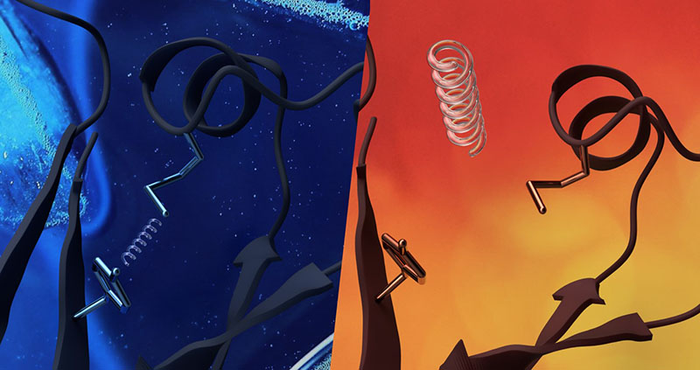Normal household waste is collected and disposed of by waste collectors, and a similar process occurs in cells to remove damaged and potentially harmful proteins. A new research study in Science Advances provides a better understanding of how this is done.

Credit: Illustration, Johannes Thomas.
Normal household waste is collected and disposed of by waste collectors, and a similar process occurs in cells to remove damaged and potentially harmful proteins. A new research study in Science Advances provides a better understanding of how this is done.
The cells use proteases for housekeeping in almost the same way as waste collectors dispose of household waste.
“Think about what happens when waste collectors go on strike in a big city. Similarly, a non-functioning waste collection system in a cell can lead to chaos when damaged proteins accumulate. This could allow serious diseases to develop,” says Björn M. Burmann, senior lecturer and researcher in chemistry at the University of Gothenburg, and team leader for the researchers behind the new study.
Neutralises harmful proteins
The researchers used the single-cell bacterium Escherichia coli as a model system to gain a better understanding of how proteases keep cells clean. This is a bacterium that is found in the human intestine that has adapted to survive under a range of stressful environmental conditions.
“One of the waste collection disposal workers in the bacterial cell is the enzyme DegP, a protease that can eliminate unstable and harmful proteins by shredding them into pieces and thus prevent them from building up in the cell,” says Darius Šulskis, principal author of the study and doctoral student in Björn M. Burmann’s research group.
Temperature switches activate response
Until now it was unknown what activated DegP, but Darius Šulskis has shown in the study that DegP is activated by a temperature switch is controlled at a molecular level. DegP is inactive at low temperatures but activates at high temperatures. This starts up the waste disposal work in the cell, disposing of hazardous rubbish.
“Understanding this built-in cleaning mechanism means that it can be used in medical research and be important for future medical applications,” says Björn M. Burmann.
Facts
Proteases are enzymes, biological catalysts, that facilitate proteolysis, decomposition of proteins into smaller parts, such as peptides or even individual amino acids.
The research was conducted using Nuclear magnetic Resonance in the advanced NMR spectroscopy infrastructure at the Swedish NMR Centre, which is hosted by the University of Gothenburg.
The study is the work of researchers from the University of Gothenburg and the Wallenberg Centre of Molecular and Translational Medicine.
The research was made possible by funding from the Knut and Alice Wallenberg Foundation (BMB), the Swedish Research Council (BMB) and an EMBO Long-term Fellowship to co-author Johannes Thomas.
Contact:
Björn M. Burmann (+46) 701 485 528 Email: [email protected]
Article name: Structural basis of DegP-protease temperature-dependent activation.
Link to the article: https://www.science.org/doi/10.1126/sciadv.abj1816
Illustration, Johannes Thomas.
Caption: Increasing temperature breaks the molecular bound between two DegP units and initiates their proteolytic activity.
Journal
Science Advances
DOI
10.1126/sciadv.abj1816
Method of Research
Experimental study
Subject of Research
Cells
Article Title
New study gives a better understanding of how housekeeping takes place in cells
Article Publication Date
8-Dec-2021




